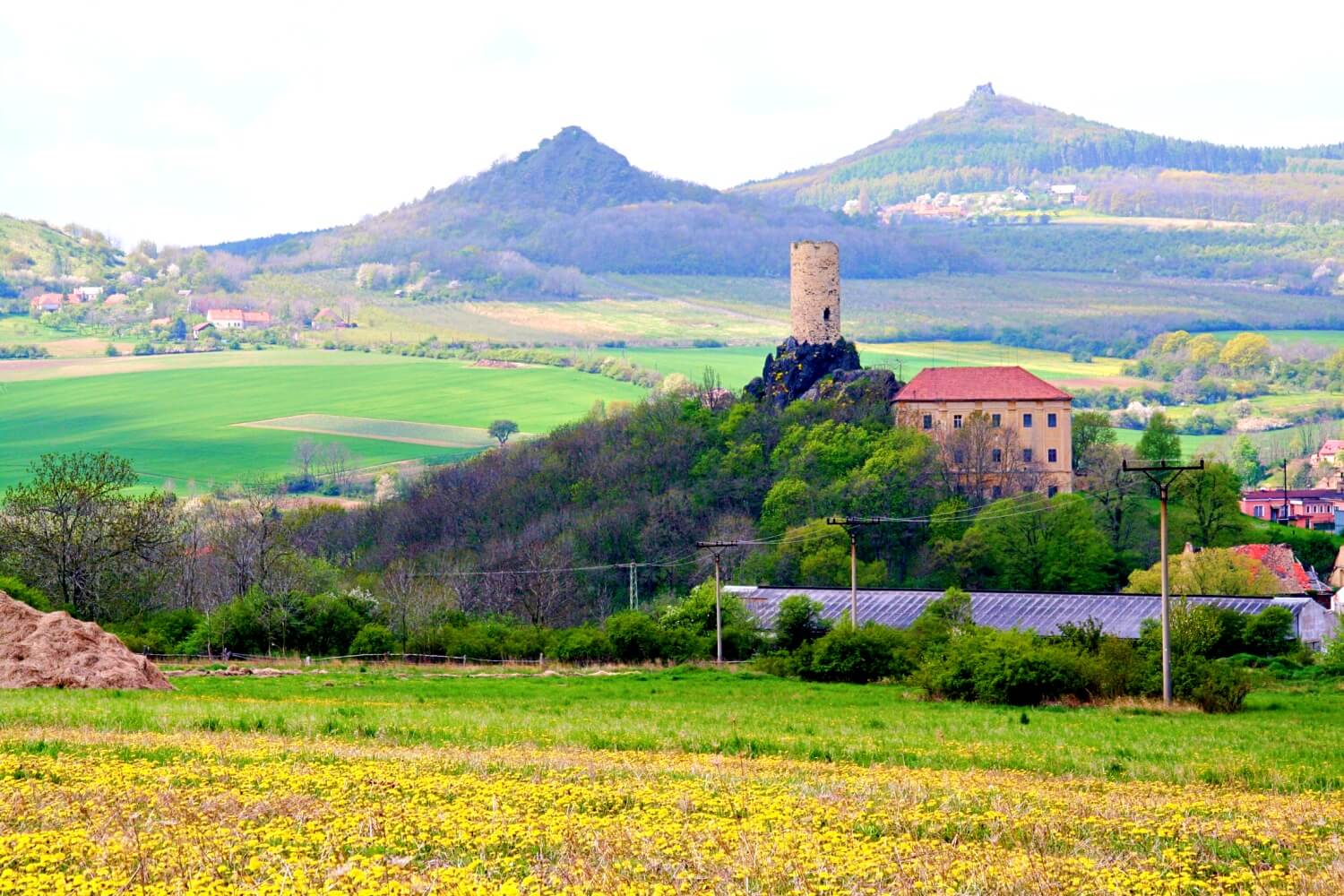Skalka Castle
Litoměřice Ústecký kraj Czech Republic
castle, chateau
Zámek Skalka
Litoměřice Ústecký kraj Czech Republic
castle, chateau
Skalka, a castle together with a chateau, are found in the western area of the Czech central mountains, at the village Vlastislav not far from Třebenice
První písemná zmínka o hradu pochází z roku 1357, kdy se jeho název objevuje v predikátu Petra ze Skalky
Previous names
Skalka Castle, Zámek Skalka
Description
Skalka, a castle together with a chateau, are found in the western area of the Czech central mountains, at the village Vlastislav not far from Třebenice. The first mention of the castle is from 1357, in connection with Petr, known as Skála. During the Hussite wars, the castle was held by an enemy of the Hussites, Hanuš of Sulevice. In 1496 it was obtained by Vchynští of Vchynice. After this, ownership alternated until in 1544 Jan Kaplíř of Sulevice and Košťálově bought Skalka. In 1579 the next owner, Adam Hrzán of Harasov, extended the estates. In 1639 Skalka was devastated by Swedish soldiers and much of its masonry was used in building a baroque chateau, which eventually built next to the former castle by the Hrzáns of Harasov.
The castle stood on a thin rocky ridge, whose northeast flank borders a cliff wall which the chateau building almost clings to. The northwest flank is milder, and so the access path (which splits in two directions) runs here. One path leads under the forecastle, the other leads to the cliff with the rounded tower of the castle (commonly called bergfrit). The tower, which has relatively well-preserved battlements, is irregular in section and is 15.5 meters high. The entry is 9.5 meters above ground level. Inside the tower there were once writings, engraved by prisoners in the 17th century when the tower served as a prison. Behind the tower is a small area, where presumably the palace stood. The oldest part of the site is the castle area on the top of the rocky ridge. Later the castle was extended even to the location of the chateau, and part of the cellars were preserved. Before 1579, a Renaissance chateau was evidently located on the site of the present-day chateau, this was destroyed in 1639 by the Swedish. The present chateau dated from the end of the 17th century. Material quarried from the castle was used during its construction, and the only remnant of the castle standing today is the imposing tower.
http://m.taggmanager.cz/
První písemná zmínka o hradu pochází z roku 1357, kdy se jeho název objevuje v predikátu Petra ze Skalky. Rod zakladatelů hradu vlastnil Skalku do začátku 15. století. V roce 1414 je jako její majitel uveden Hanuš ze Sulevic. Kaplířové vlastnili Skalku až do roku 1578, kdy ji sňatkem získal Adam Hrzán z Harasova.
Skalka na rytině F. A. Hebera z roku 1845
Během třicetileté války lavíroval majitel Skalky Zdeslav Hrzán z Harasova mezi válčícími stranami. Skalku se mu ale podařilo udržet a uhájit před konfiskací ze strany královské komory. Za švédského vpádu v roce 1639 byl hrad zpustošen a od té doby přestal být obývaný.
To byl důvod, proč se Hrzánové rozhodli postavit nové rezidenční sídlo. Nechtěli zřejmě opustit polohu uprostřed Českého středohoří a na úpatí hradu postavili zámek. Jeho podoba nasvědčuje vzniku ve 2. polovině 17. století. Stalo se tak pravděpodobně za Jana Adama z Harasova († 1681), povýšeného v roce 1650 do panského stavu a roku 1666 mezi říšská knížata. V roce 1719 bylo panství Skalka spojeno s dominiemi Dlažkovice a Podsedice a zámek se stal jejich správním střediskem. V letech 1730–1796 vlastnili tento majetek páni z Hatzfeldu, po nich Schönbornové. František Alexandr Heber uvádí, že v polovině 19. století sídlila v zámku správa panství Dlažkovice. Celé druhé patro a západní část budovy byly prázdné. U zámku stál hospodářský dvůr, pivovar, lihovar, ovčín, myslivna a bažantnice. Zámek obklopovaly ovocné stromy. Po druhé světové válce sloužil zámek jako depozitář Státního oblastního archivu v Litoměřicích.
Nearby castles
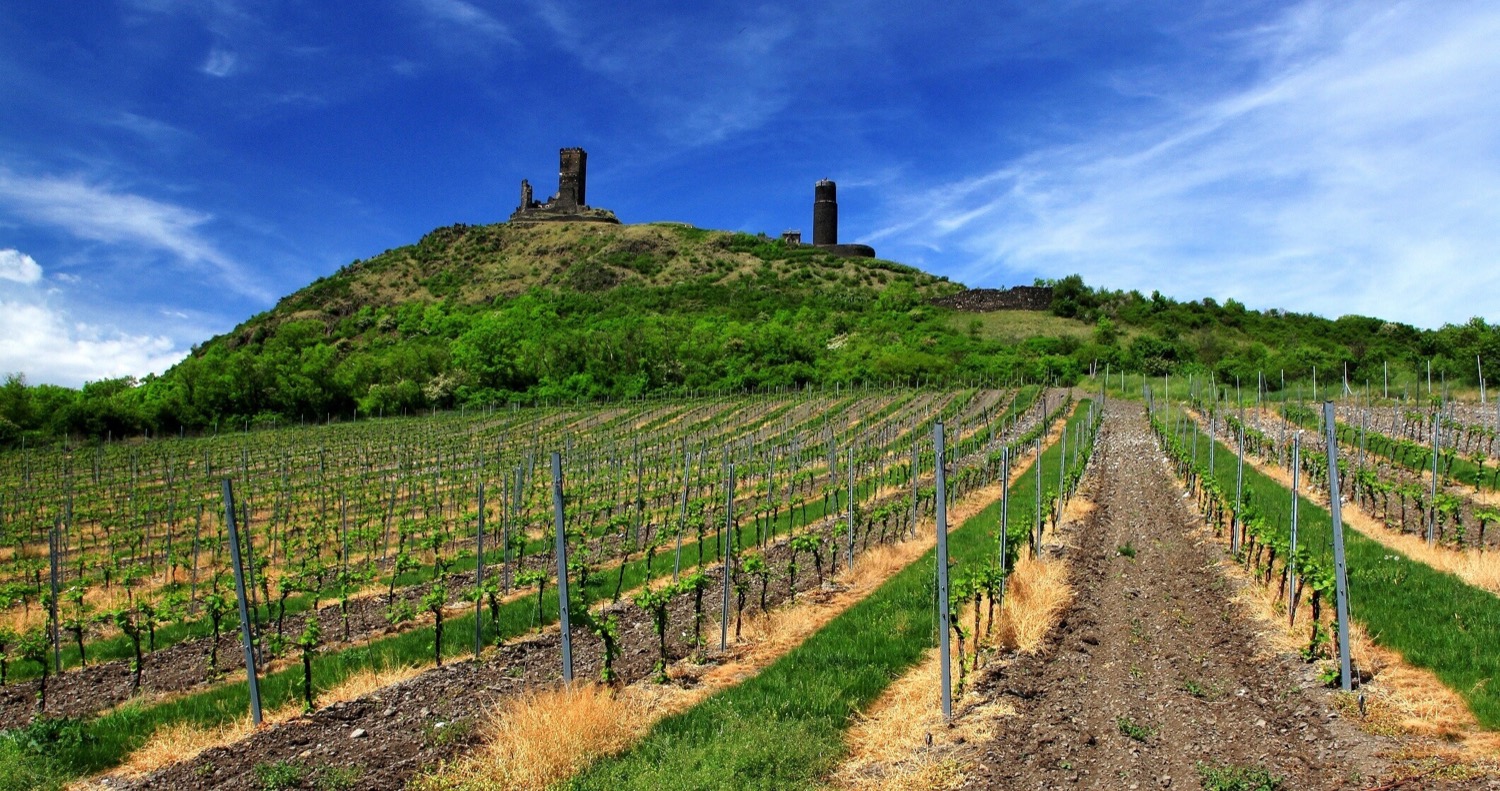
Házmburk Castle
Litoměřice
8.0km
castle, chateau

Kostomlaty Castle
Teplice
8.5km
castle, chateau
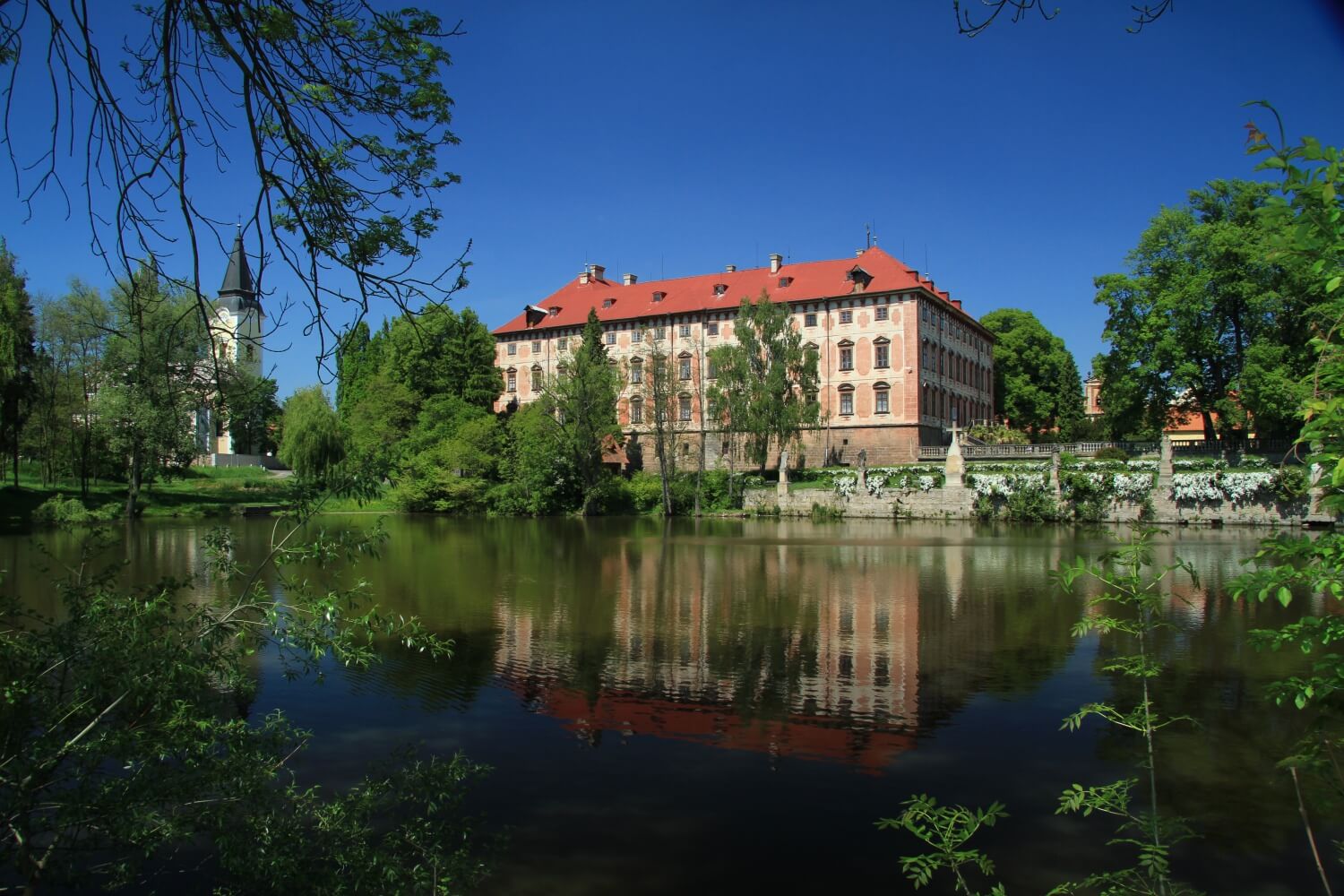
Libochovice Chateau
Litoměřice
11.9km
castle, chateau
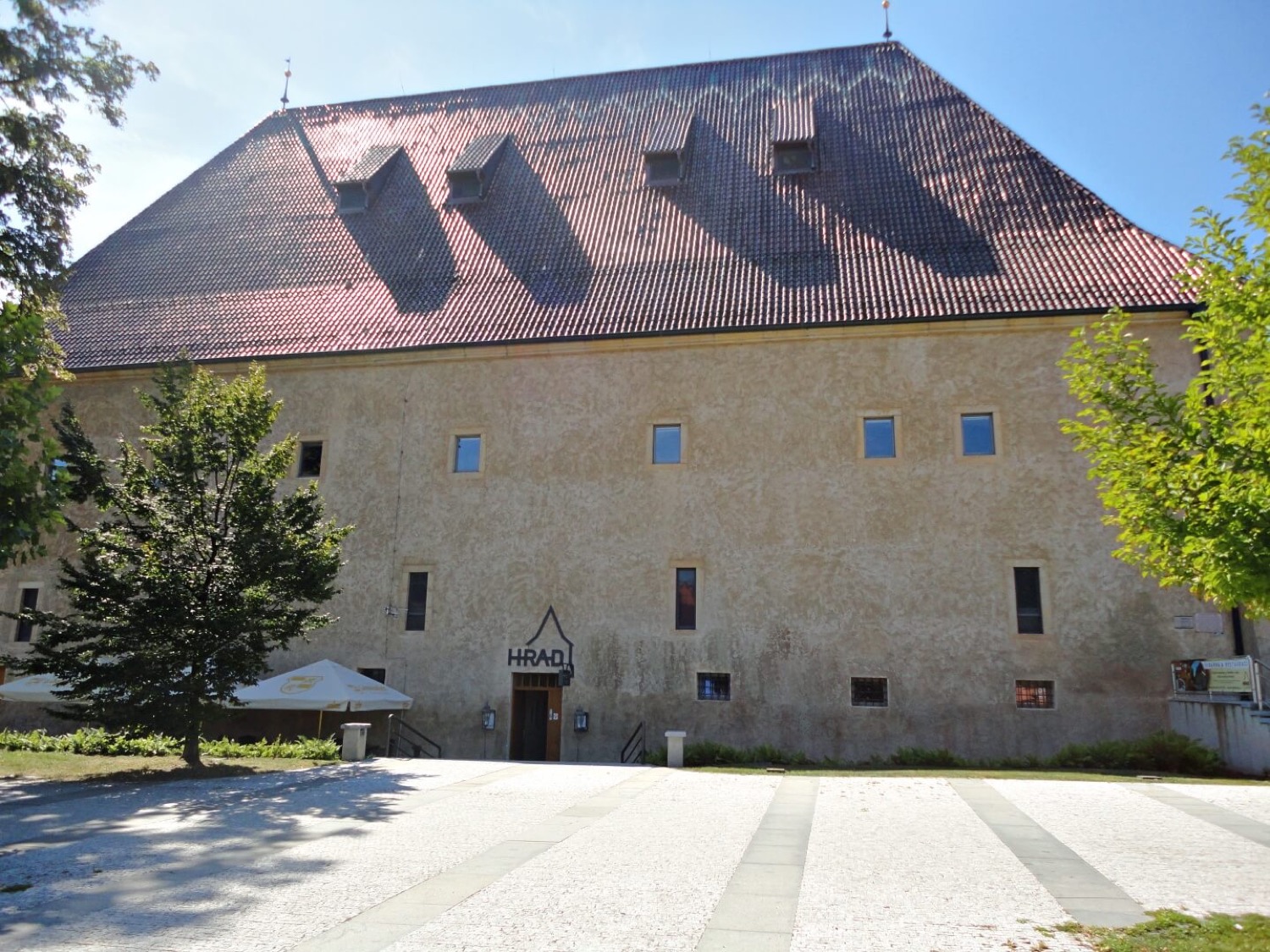
Litoměřice Castle
Litoměřice
12.7km
castle, chateau
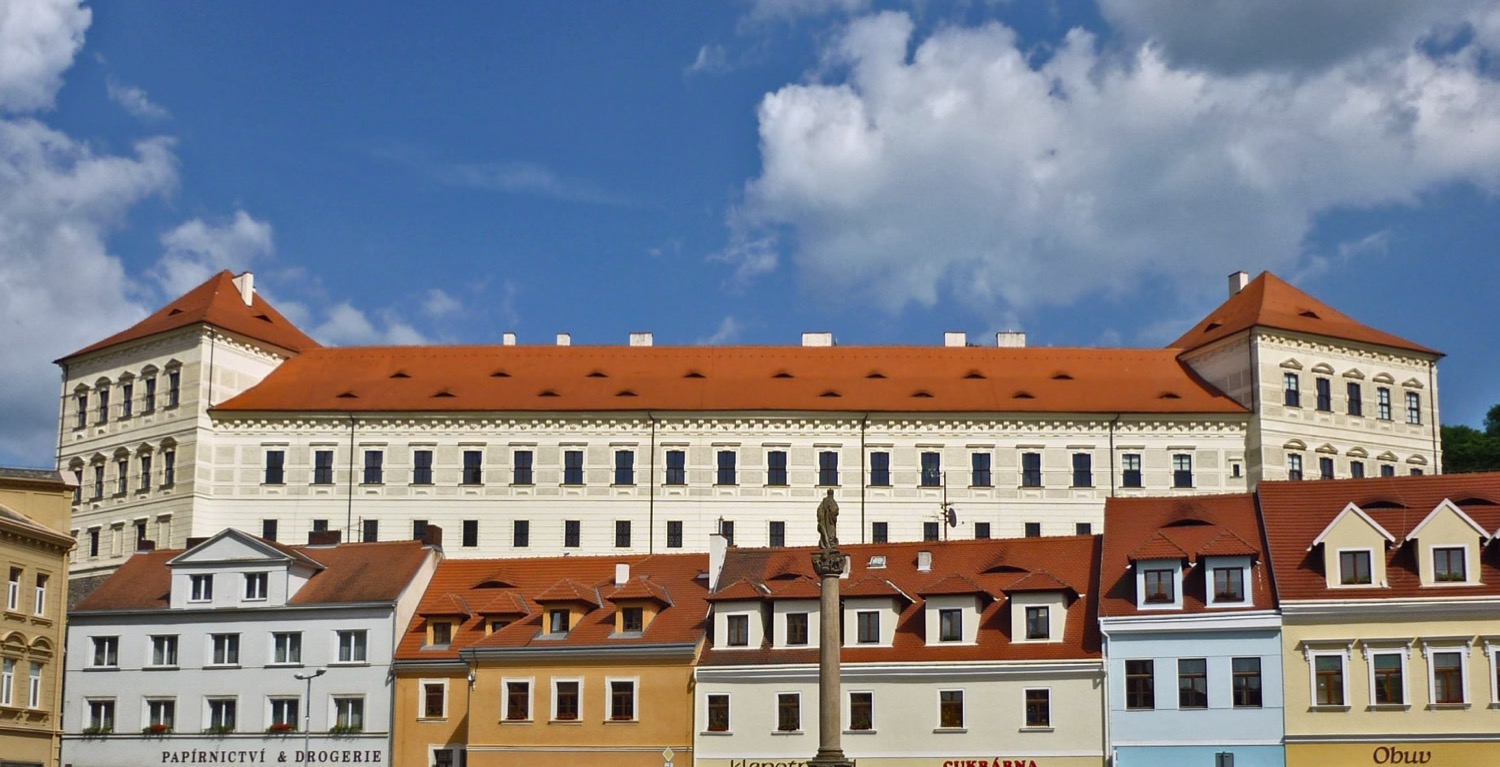
Bílina Chateau
Teplice
14.2km
castle, chateau
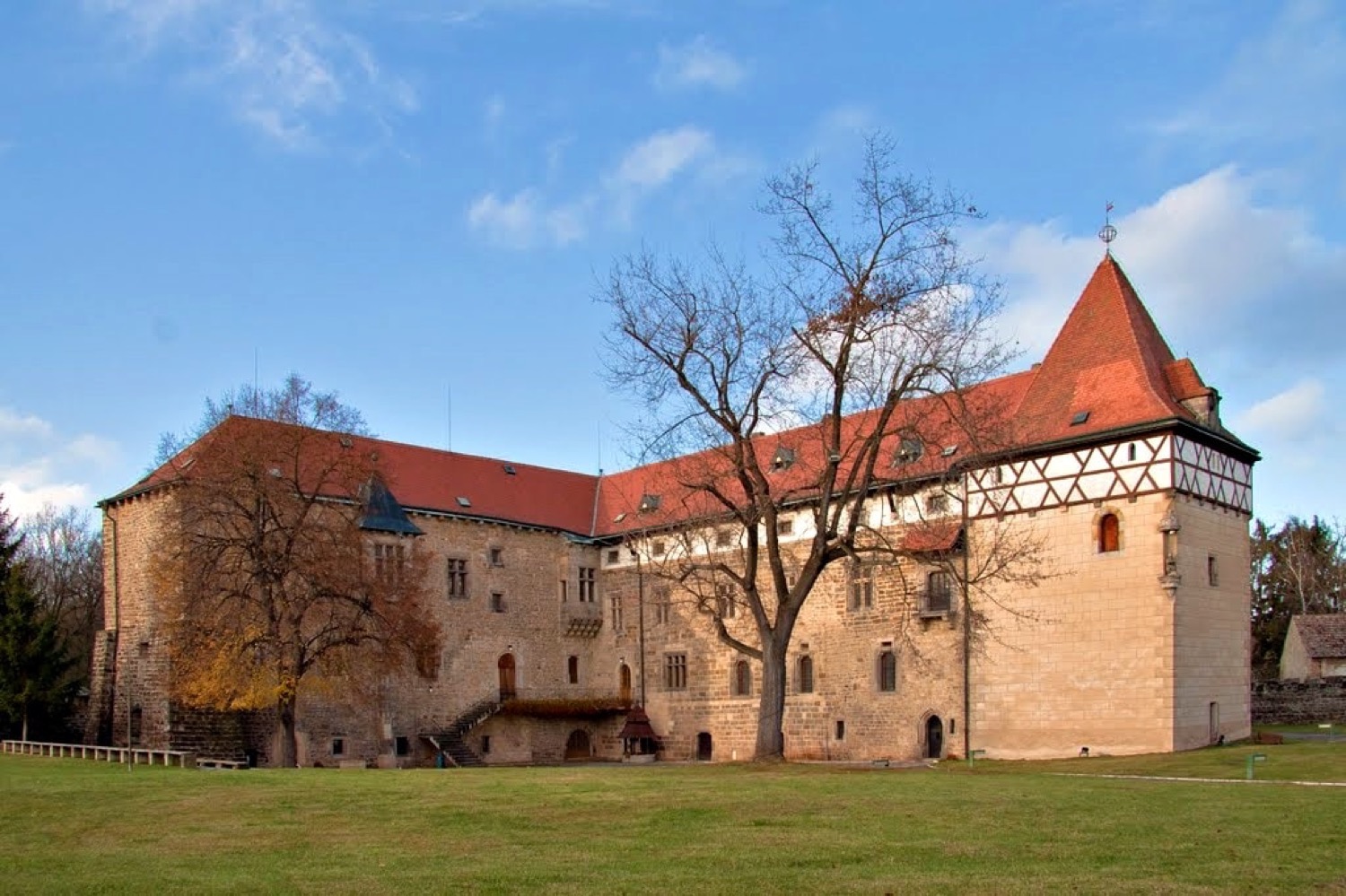
Budyně nad Ohří Castle
Litoměřice
15.5km
castle, chateau
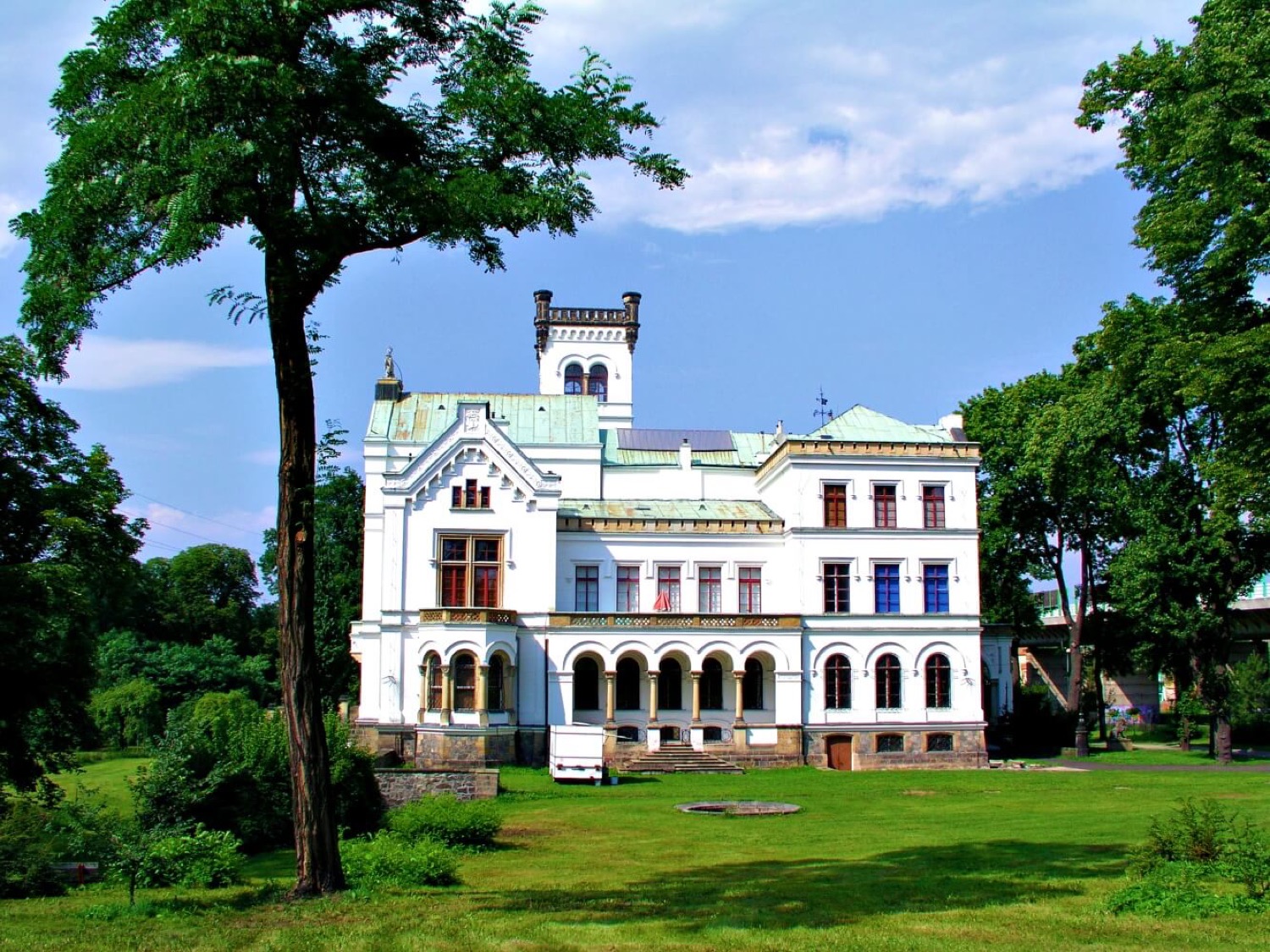
Trmice Chateau
Ústí nad Labem
16.2km
castle, chateau
